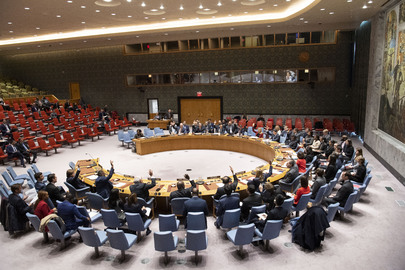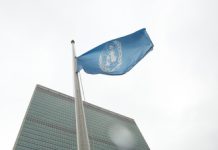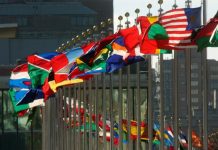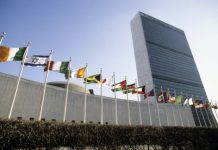Gazans have few defences against rising disease threat, warns UNRWA
The people of Gaza forced to shelter in tents and with nowhere safe to go, are continuing to face Israeli bombardment, aid teams said on Wednesday.
In an update, the UN aid coordination office, OCHA, reported at least 23 incidents in which tents were struck from 15-21 April that killed a reported 78 Palestinians, including women and children.
The violence has also forced nutrition centres to close, at a time when food insecurity in Gaza is on the rise.
The UN agency for Palestine refugees, UNRWA, meanwhile, warned once again that disease is spreading. Here’s Senior Emergency Officer Louise Wateridge:
“There’s not enough medicine. It’s been over 50 days that medical supplies and all supplies have been blocked from entering the Gaza Strip by Israeli authorities, and this is having a massive impact on the people’s wellbeing. Children are already malnourished families are malnourished. They’ve had 18 months of unsustained access to any kind of nutrients, any kind of healthy foods – and all of this is having a huge impact on their wellbeing.”
AI can lighten the workload but its risks shouldn’t be dismissed: ILO
Artificial intelligence, robotics, and digitalization are reshaping how we work but they’re a source of unexpected risks too.
That’s the message from the UN labour agency, ILO, which has issued a new report highlighting how the technological revolution offers a way out from jobs that are “dirty, dangerous and demeaning”.
But the ILO also warns that greater oversight is needed to prevent unexpected safety issues caused by the roll-out of AI and associated innovations.
Those at risk include people who work with robots – as they may be exposed to injuries from malfunctions or design flaws.
Firms are also in danger of cyberattacks or system failures, as workplaces become more connected, ILO said.
The UN agency also pointed to the link between burnout and workloads that are dictated by algorithms, as well as the health and safety risks faced by workers across the digital supply chain – from those in extractive industries to those who handle electronic waste.
End child marriage and keep girls in school to curb deadly teenage pregnancies: WHO
Teenage pregnancy remains the leading cause of death among 15 to 19-year-old girls, which countries could help prevent by keeping them in full-time education and ending child marriage, the UN World Health Organization (WHO) said on Wednesday.
Of the more than 21 million adolescent girls who become pregnant in low and middle-income countries every year, around half of these pregnancies are unintended.
Nine in 10 adolescent births also involve girls who are married before they turn 18.
Early pregnancies often reflect “fundamental inequalities” that affect girls’ ability “to shape their relationships and their lives,” said Dr Pascale Allotey, Director of Sexual and Reproductive Health and Research at WHO.
To help end teen deaths, the UN agency is calling on governments to offer better alternatives to child marriage.
These include improving access to education, financial services and jobs.
If all girls finished secondary school, child marriage could be slashed by up to two-thirds, according to the UN Children’s Fund (UNICEF)
There has been global progress, says WHO, which noted that in 2021, one in 25 girls gave birth before age 20 – up from one in 15 at the turn of the century.
Daniel Johnson, UN News
Music composed and produced by Joachim Harris. All rights reserved.
Source of original article: United Nations (news.un.org). Photo credit: UN. The content of this article does not necessarily reflect the views or opinion of Global Diaspora News (www.globaldiasporanews.com).
To submit your press release: (https://www.globaldiasporanews.com/pr).
To advertise on Global Diaspora News: (www.globaldiasporanews.com/ads).
Sign up to Global Diaspora News newsletter (https://www.globaldiasporanews.com/newsletter/) to start receiving updates and opportunities directly in your email inbox for free.

































